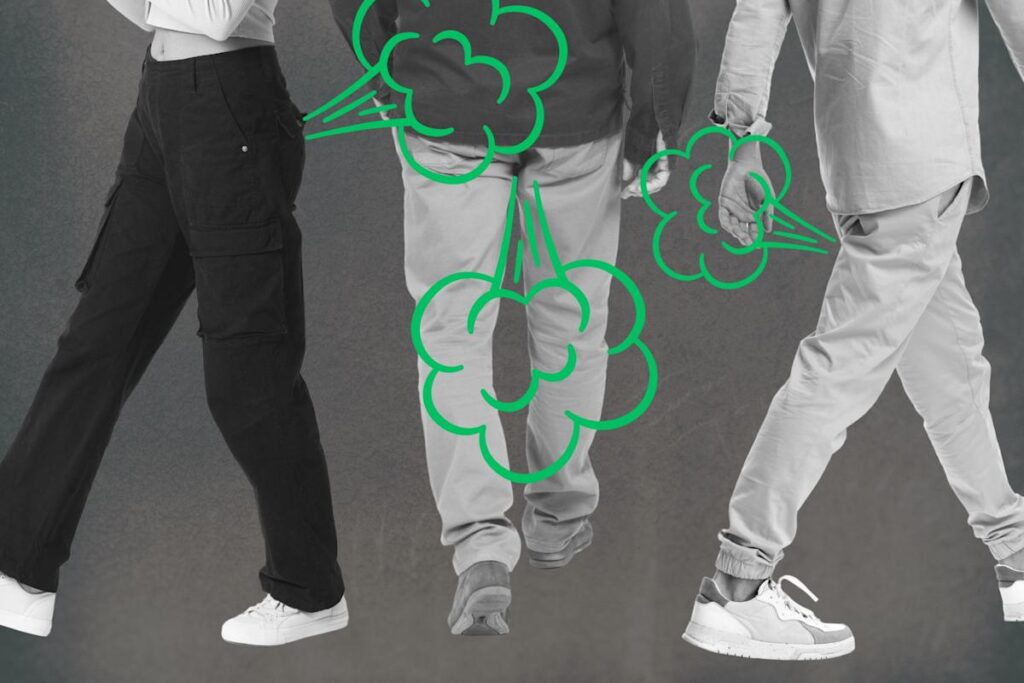
What was once known as an after-dinner stroll has been rebranded as a “fart walk” on social media, and this trend is gaining popularity. Advocates of the so-called fart walk—a short stroll taken up to about an hour after eating—claim it aids digestion and alleviates gastrointestinal symptoms like gas and bloating. But what do medical professionals think about this viral phenomenon?
The Science Behind “Fart Walks”
According to Dr. David D. Clarke, a clinical assistant professor of gastroenterology emeritus at Oregon Health & Science University, feeling bloated after a meal is a common issue. This discomfort often results from overeating, eating too quickly, or consuming carbonated beverages. To counter these symptoms, walking after meals can help, as it enhances the muscle contractions of the gastrointestinal tract, known as peristalsis, which can facilitate the passage of gas.
Research has long supported the benefits of a postprandial walk, particularly in reducing blood sugar levels. This aligns with the findings of Dr. Shawn Khodadadian of Manhattan Gastroenterology, who notes that mild-to-moderate exercise, such as walking, helps the stomach empty more quickly, improving transit through the intestinal tract and clearing out gas and waste.
Medical Perspectives on the Trend
Both Clarke and Khodadadian agree that “fart walks” can promote bowel motility and relieve symptoms of bloating and gas. Clarke explains that walking stimulates muscle contractions in the stomach and intestines, leading to belching and farting, and can decrease the time that acid remains in the stomach, thus alleviating heartburn for most individuals.
“Walking promotes muscle contractions in the stomach and intestines that can lead to belching and farting,” says Dr. David D. Clarke.
However, Clarke warns that individuals with poor tone in the sphincter muscle at the junction of the esophagus and stomach might experience increased acid reflux when stimulated by walking.
Broader Health Benefits
Fart walking may be particularly beneficial for individuals with conditions like irritable bowel syndrome (IBS) and metabolic syndrome. Khodadadian points out that studies have shown mobility can reduce sensations of gas and bloating in IBS patients. Additionally, the ability of a post-meal stroll to regulate blood sugar is especially advantageous for those with metabolic syndrome.
Moreover, short walks after eating can benefit cardiovascular health by preventing weight gain, improving circulation, lowering blood pressure, and supporting overall fitness. Clarke highlights that walking after meals facilitates the removal of blood sugar by muscles, reducing the need for insulin secretion and potentially lowering the risk of developing diabetes.
“Walking after a meal facilitates removal of blood sugar by the muscles and thereby reduces the need for insulin secretion by the pancreas,” Clarke says.
Mental Health and Mood Enhancement
A postprandial walk can also have positive effects on mental health. Khodadadian notes that aerobic exercise can improve stress, anxiety, and mild depression by reducing baseline cortisol levels, enhancing sleep quality, and increasing levels of endorphins, dopamine, and serotonin.
Maximizing the Benefits of Fart Walks
To reap the benefits of fart walks, it is not necessary to engage in lengthy strolls. Aiming for at least four to five minutes of light-to-moderate paced walking within an hour of finishing a meal can be effective. For more sustained gastrointestinal benefits, Clarke suggests 30–60 minutes of moderate-paced walking on most days of the week.
Walking is generally healthy for everyone, but individuals with recent surgeries, motility issues, or other health concerns should consult their doctor before starting a new exercise routine. Khodadadian emphasizes that the goal is to engage in an appropriate level of exercise, including fart walking, based on personal medical history.
As this trend continues to gain traction, it highlights the enduring value of simple, natural practices in promoting health and well-being. Whether rebranded or not, the age-old habit of taking a walk after meals remains a beneficial practice supported by both tradition and science.







